De: R$ 0,00Por: R$ 68,15ou X de
Preço a vista: R$ 68,15
De: R$ 0,00Por: R$ 68,15ou X de
Preço a vista: R$ 68,15
| Selo | Dialética |
|---|---|
| Edição | 1 |
| Idioma | Inglês |
| Autores | Flávia Maria Aires Freire Allemão |
| Acabamento | Capa Comum |
| Quantidade de Páginas | 140 |
| Origem | Literatura Brasileira |
 Perspectivas Jurídicas em Negócios Empresariais
Perspectivas Jurídicas em Negócios Empresariais
Unità
R$ 78,90 à vista O descumprimento dos preceitos legais na área da saúde em relação às pessoas com deficiência
O descumprimento dos preceitos legais na área da saúde em relação às pessoas com deficiência
Paco Editorial
R$ 47,90 à vista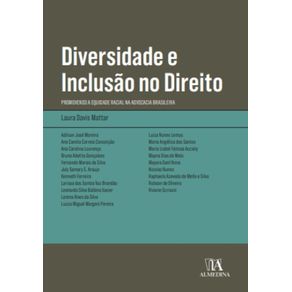 Diversidade e Inclusão no Direito
Diversidade e Inclusão no Direito
Almedina
R$ 139,00 ou até 2x sem juros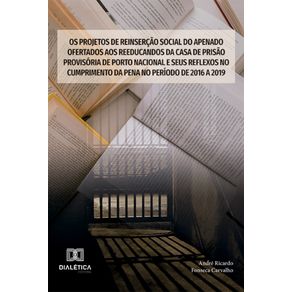 Os projetos de reinserção social do apenado ofertados aos reeducandos da Casa de Prisão Provisória de Porto Nacional e
Os projetos de reinserção social do apenado ofertados aos reeducandos da Casa de Prisão Provisória de Porto Nacional e
Dialética
R$ 120,65 ou até 2x sem juros Uso terapêutico da Cannabis - Aspectos jurídico-judiciais
Uso terapêutico da Cannabis - Aspectos jurídico-judiciais
Dialética
R$ 73,40 à vista Prêmio Ágora - Coletânea de artigos FIVJ – 2023
Prêmio Ágora - Coletânea de artigos FIVJ – 2023
Dialética
R$ 99,65 à vista Reflexões Sobre o Direito das Famílias
Reflexões Sobre o Direito das Famílias
Dialética
R$ 62,90 à vista Abordagens Interdisciplinares sobre Direito e Tecnologia - Desbravando o Direito moderno
Abordagens Interdisciplinares sobre Direito e Tecnologia - Desbravando o Direito moderno
Dialética
R$ 179,90 ou até 3x sem juros Os 11 mandamentos das operações especiais
Os 11 mandamentos das operações especiais
SGDZ Books
R$ 64,90 à vista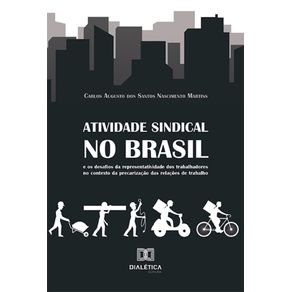 Atividade sindical no Brasil e os desafios da representatividade dos trabalhadores no contexto da precarização das rela
Atividade sindical no Brasil e os desafios da representatividade dos trabalhadores no contexto da precarização das rela
Dialética
R$ 73,40 à vista Como usufruir sua mente poderosa
Como usufruir sua mente poderosa
Dialética
R$ 83,90 à vista Ativismo judicial e o princípio da reserva legal
Ativismo judicial e o princípio da reserva legal
Dialética
R$ 62,90 à vista O fluxo de comércio brasileiro - Análise assimétrica bilateral entre o Brasil e seus principais parceiros de comércio
O fluxo de comércio brasileiro - Análise assimétrica bilateral entre o Brasil e seus principais parceiros de comércio
Dialética
R$ 73,40 à vista Artes musicais africanas na Diáspora - Corpos, vozes, ritmos e sonoridades em movimento
Artes musicais africanas na Diáspora - Corpos, vozes, ritmos e sonoridades em movimento
Dialética
R$ 110,15 ou até 2x sem juros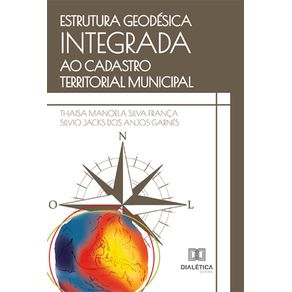 Estrutura geodésica integrada ao cadastro territorial municipal
Estrutura geodésica integrada ao cadastro territorial municipal
Dialética
R$ 73,40 à vista Perspectivas Jurídicas em Negócios Empresariais
Perspectivas Jurídicas em Negócios Empresariais
Unità
R$ 78,90 à vista História das leis sociais no Brasil
História das leis sociais no Brasil
Paco Editorial
R$ 88,90 à vista Dano Existencial: Uma Análise Jurídica Profunda nas Cortes Superiores do Brasil
Dano Existencial: Uma Análise Jurídica Profunda nas Cortes Superiores do Brasil
Paixão Editores
R$ 58,00 à vista Diversidade e Inclusão no Direito
Diversidade e Inclusão no Direito
Almedina
R$ 139,00 ou até 2x sem juros Direitos Humanos e empresa - Estudo a partir do caso dos empregados da Fábrica de Fogos de Santo Antônio de Jesus versu
Direitos Humanos e empresa - Estudo a partir do caso dos empregados da Fábrica de Fogos de Santo Antônio de Jesus versu
Dialética
R$ 73,40 à vista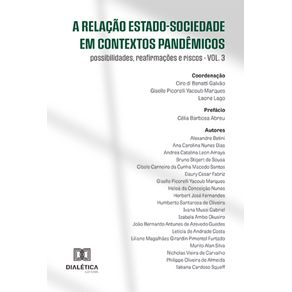 A relação Estado-Sociedade em contextos pandêmicos - Possibilidades, reafirmações e riscos - Volume 3
A relação Estado-Sociedade em contextos pandêmicos - Possibilidades, reafirmações e riscos - Volume 3
Dialética
R$ 99,65 à vista Crianças e Adolescentes e a Ressocialização no Brasil - Apontando falhas e acertos no Sistema Socioeducativo
Crianças e Adolescentes e a Ressocialização no Brasil - Apontando falhas e acertos no Sistema Socioeducativo
Dialética
R$ 47,15 à vista Uso terapêutico da Cannabis - Aspectos jurídico-judiciais
Uso terapêutico da Cannabis - Aspectos jurídico-judiciais
Dialética
R$ 73,40 à vista Prêmio Ágora - Coletânea de artigos FIVJ – 2023
Prêmio Ágora - Coletânea de artigos FIVJ – 2023
Dialética
R$ 99,65 à vista Os 11 mandamentos das operações especiais
Os 11 mandamentos das operações especiais
SGDZ Books
R$ 64,90 à vista Dick, meu melhor amigo
Dick, meu melhor amigo
Dialética
R$ 52,40 à vista Atividade sindical no Brasil e os desafios da representatividade dos trabalhadores no contexto da precarização das rela
Atividade sindical no Brasil e os desafios da representatividade dos trabalhadores no contexto da precarização das rela
Dialética
R$ 73,40 à vista Ensaio sobre a finitude em Sartre - Ontologia, história e psicanálise existencial
Ensaio sobre a finitude em Sartre - Ontologia, história e psicanálise existencial
Dialética
R$ 110,15 ou até 2x sem juros A voz do dono e o dono da voz - Propriocepção na preparação vocal do ator
A voz do dono e o dono da voz - Propriocepção na preparação vocal do ator
Dialética
R$ 62,90 à vista Estrutura geodésica integrada ao cadastro territorial municipal
Estrutura geodésica integrada ao cadastro territorial municipal
Dialética
R$ 73,40 à vista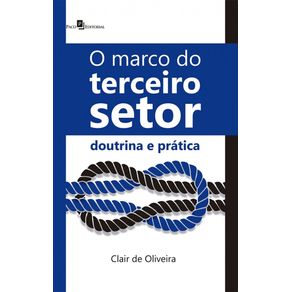 O marco do terceiro setor: Doutrina e prática
O marco do terceiro setor: Doutrina e prática
Paco Editorial
R$ 63,80 à vista Dano Existencial: Uma Análise Jurídica Profunda nas Cortes Superiores do Brasil
Dano Existencial: Uma Análise Jurídica Profunda nas Cortes Superiores do Brasil
Paixão Editores
R$ 58,00 à vista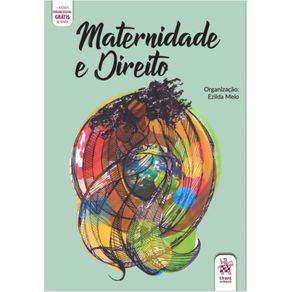 Maternidade e Direito
Maternidade e Direito
Tirant lo Blanch
R$ 97,90 à vista A relação Estado-Sociedade em contextos pandêmicos - Possibilidades, reafirmações e riscos - Volume 3
A relação Estado-Sociedade em contextos pandêmicos - Possibilidades, reafirmações e riscos - Volume 3
Dialética
R$ 99,65 à vista Crianças e Adolescentes e a Ressocialização no Brasil - Apontando falhas e acertos no Sistema Socioeducativo
Crianças e Adolescentes e a Ressocialização no Brasil - Apontando falhas e acertos no Sistema Socioeducativo
Dialética
R$ 47,15 à vista O que Beethoven não pôde ouvir - A Nona Sinfonia e os Direitos Humanos, como a corrupção internacional afeta o direito
O que Beethoven não pôde ouvir - A Nona Sinfonia e os Direitos Humanos, como a corrupção internacional afeta o direito
Dialética
R$ 73,40 à vista Negócios Jurídicos Processuais
Negócios Jurídicos Processuais
Dialética
R$ 73,40 à vista Direito de Patentes na Pesquisa Universitária - A realidade brasileira e a visão do Direito Comparado
Direito de Patentes na Pesquisa Universitária - A realidade brasileira e a visão do Direito Comparado
Dialética
R$ 99,65 à vista Abordagens Interdisciplinares sobre Direito e Tecnologia - Desbravando o Direito moderno
Abordagens Interdisciplinares sobre Direito e Tecnologia - Desbravando o Direito moderno
Dialética
R$ 179,90 ou até 3x sem juros Raízes da crise fiscal do Estado do Rio de Janeiro - Uma análise da deflagração da crise fiscal a partir das contas púb
Raízes da crise fiscal do Estado do Rio de Janeiro - Uma análise da deflagração da crise fiscal a partir das contas púb
Dialética
R$ 73,40 à vista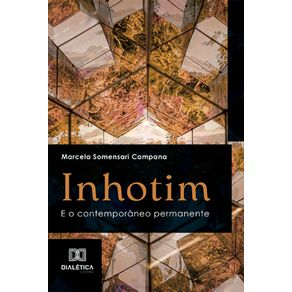 Inhotim e o contemporâneo permanente
Inhotim e o contemporâneo permanente
Dialética
R$ 120,65 ou até 2x sem juros Ativismo judicial e o princípio da reserva legal
Ativismo judicial e o princípio da reserva legal
Dialética
R$ 62,90 à vista Imprensa Lésbica - Uma história possível
Imprensa Lésbica - Uma história possível
Dialética
R$ 73,40 à vista A voz do dono e o dono da voz - Propriocepção na preparação vocal do ator
A voz do dono e o dono da voz - Propriocepção na preparação vocal do ator
Dialética
R$ 62,90 à vista O livro das virtudes - Para geração Z e Alpha
O livro das virtudes - Para geração Z e Alpha
Dialética
R$ 94,40 à vista